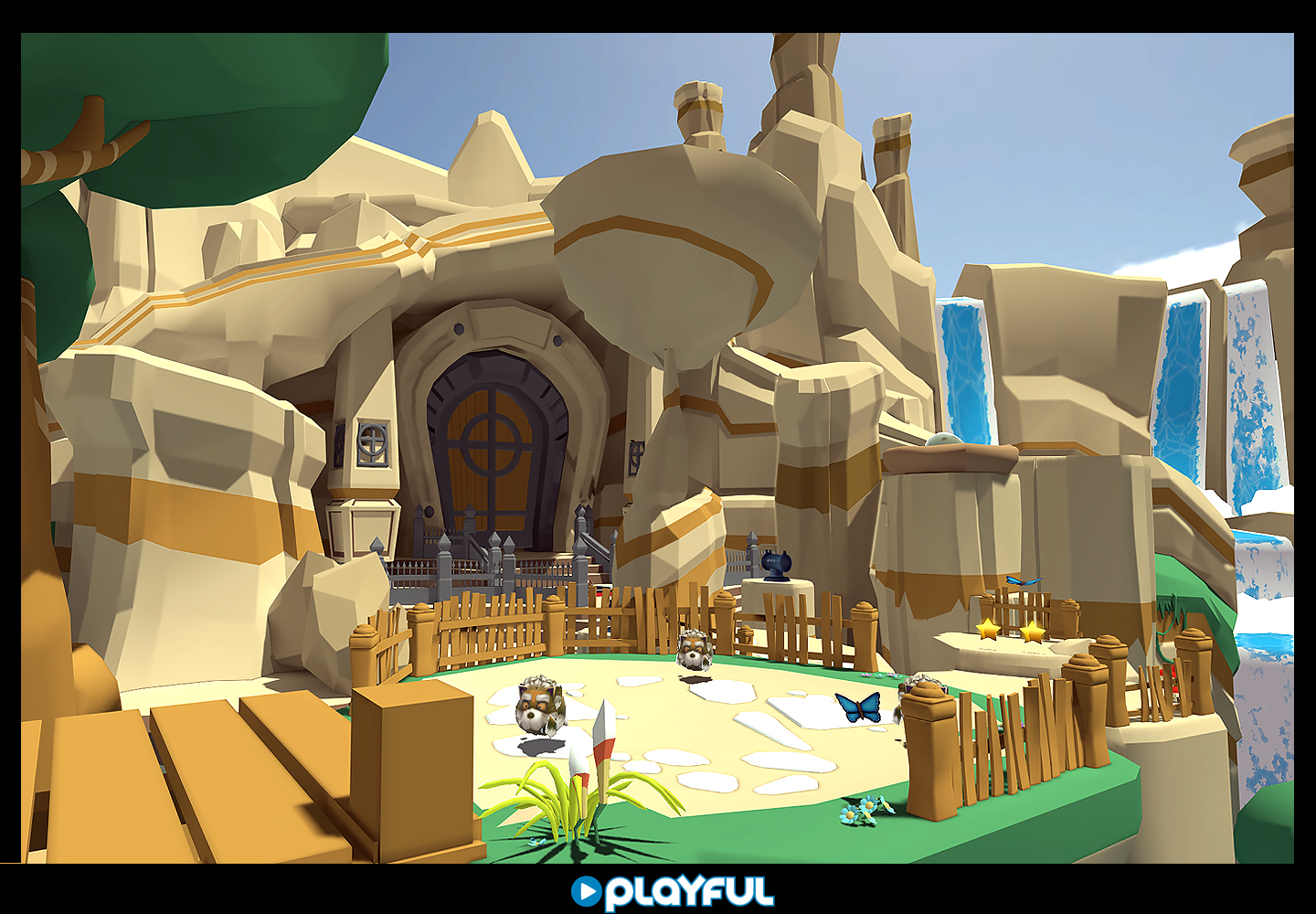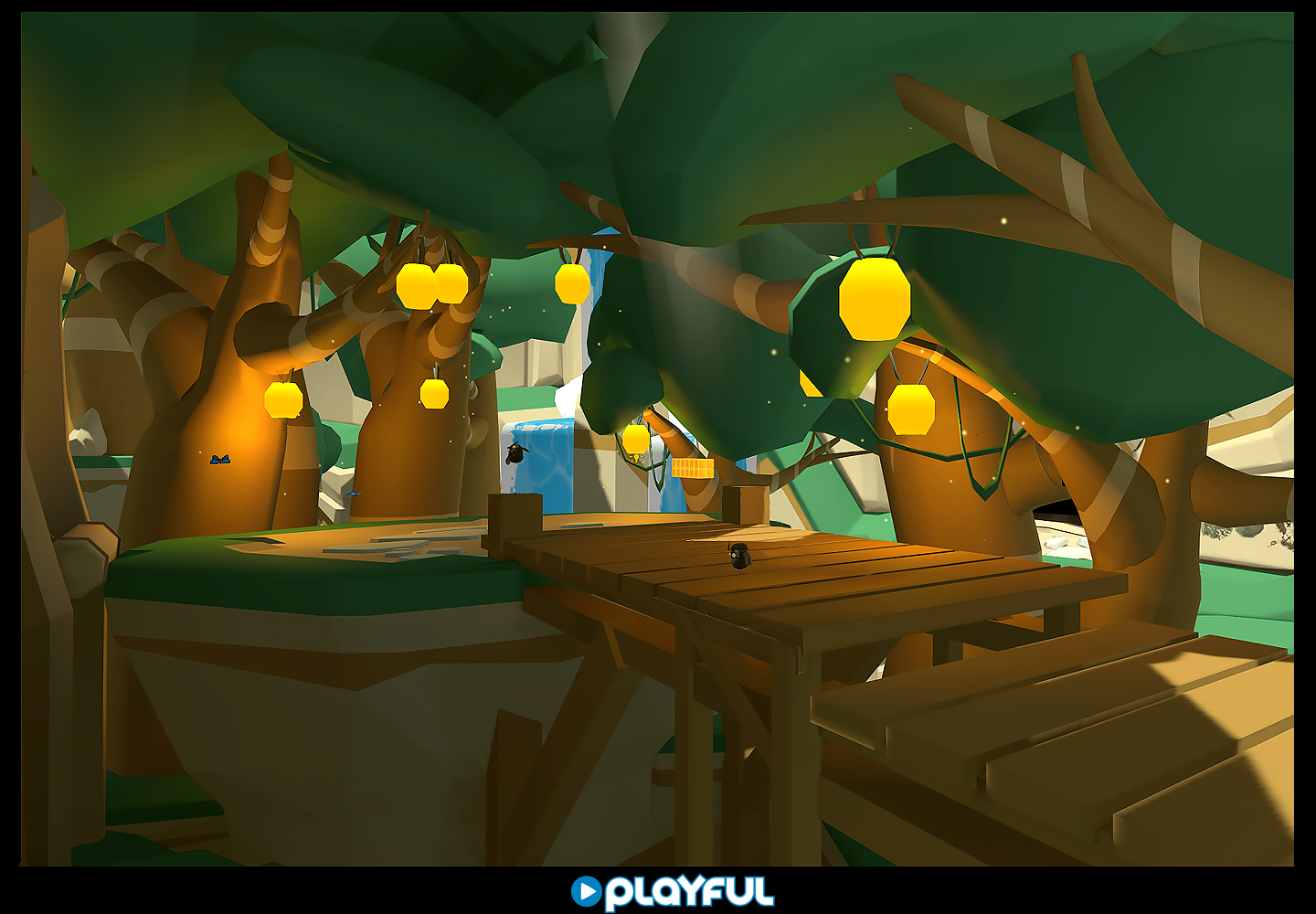'Lucky's Tale' Proves Third-Person Gameplay Works In VR

At Oculus' press event two weeks ago, we saw a few trailers of some of the games that would show up on the VR headset. Some of these titles seemed out of place because they provided a third-person perspective for the experience. It seems strange that a game built for VR would offer something other than a first-person perspective, doesn't it? That was my line of thinking at E3, before I sat down and played Lucky's Tale. But just as with any other VR experience, seeing is believing.
A New Take On An Old Mechanic
The game put me in control of Lucky, a little fox, as I traversed an island level. The game felt like a traditional platformer; I bounced on various enemies, collected coins, and avoided obstacles such as deep rivers and statues that breathed fire.
However, the Rift added a level of immersion to the entire experience. If the game was played on a regular screen, you would only be able to see the area in front of you. With the Rift, I was able to look around and even behind me at the path I just traveled a few seconds ago. I could look up and see the central part of the island: a large volcano that spewed fire and rocks from its summit. The child-like art style of the game help set the tone for the game, and perhaps surprisingly, it worked doubly so in VR.

Using the Rift also meant that I could interact with the environment in different ways. I could get a closer look at Lucky, and when I did he waved at me. I could also get a closer look at the obstacles that lay ahead. One of these was a line of coins that I could grab, but as I looked closer, a line of fire erupted from a nearby statue, causing me to actually jolt my head back. Numerous boxes also dotted the environment, and I could nudge them with my head to help Lucky break them, revealing the coins inside.
Very Convincing
With the line growing outside the Oculus booth, I only had a short time to play through the game. As soon as I reached the inner caverns beneath the volcano, I had one mishap and died, bringing my time with the game to a close. But it was long enough that I was convinced that a game like Lucky's Tale could work in VR, regardless of the camera perspective.
The reason why people are fascinated with VR is that it brings you one step closer to interacting with a game. If you played the same game on a TV screen, it wouldn't have the same feeling as putting on the Rift. There's ambient vision, for lack of a better term; on a TV or monitor, you still notice various objects in the room, such as the windows, adjacent couches and people moving around. With the Rift, all of that is obscured, and the environment around you is within the game, transporting you to another world entirely.
This is at the center of what every VR experience wants to give the user, and thanks to games like Lucky's Tale, it doesn't really matter if it’s a first-person or third-person experience. As I said in the beginning, seeing is believing, and all my doubts about Lucky's Tale were erased after actually sitting down and playing the game.
Get Tom's Hardware's best news and in-depth reviews, straight to your inbox.
Follow Rexly Peñaflorida II @Heirdeux. Follow us @tomshardware, on Facebook and on Google+.
-
fireaza This is the same criticism that the Virtual Boy suffered from. Yes, a big part of its appeal is the virtual reality aspect, but what's wrong with taking a step back on some titles and simply using it as a stereoscopic 3D display? Plat forming games make much more sense when you can judge distances correctly, something hard to do on a 2D monitor.Reply